Conflict Zones
North Korea’s Kim Jong Un oversees tests of new AI-equipped suicide drones | Kim Jong Un News
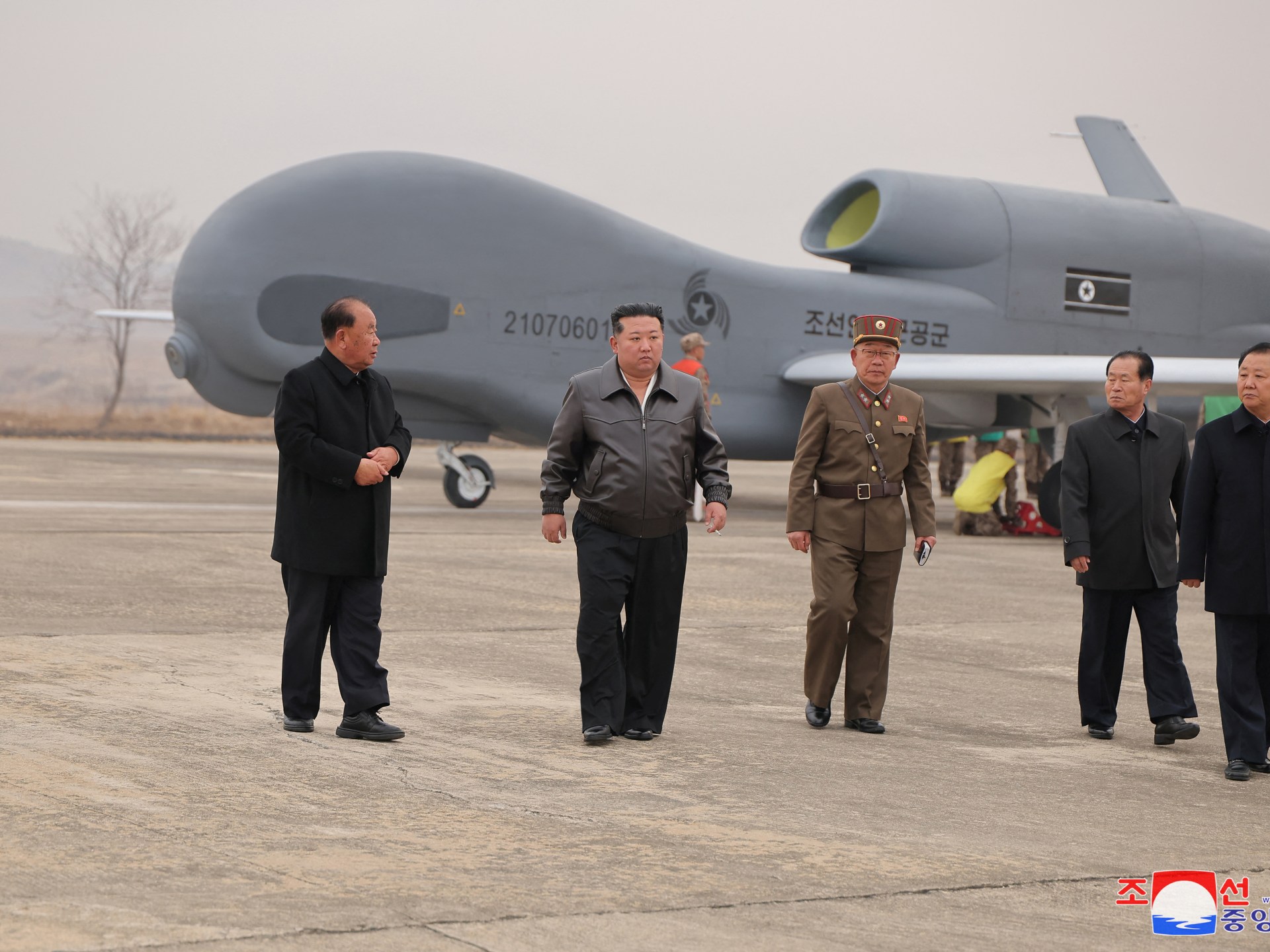
North Korea’s leader oversaw tests of his country’s latest military innovations involving the use of artificial intelligence.
North Korean leader Kim Jong Un has personally supervised his country’s testing of new AI-equipped suicide and reconnaissance drones and called for unmanned aircraft and artificial intelligence to be prioritised in military modernisation plans.
State-run Korean Central News Agency (KCNA) said on Thursday that Kim oversaw the testing of “various kinds of reconnaissance and suicide drones” produced by North Korea’s Unmanned Aerial Technology Complex.
The new North Korean drones are capable of “tracking and monitoring different strategic targets and enemy troop activities on the ground and the sea”, while the attack drones will “be used for various tactical attack missions”, KCNA said, noting that both drone systems have been equipped with “new artificial intelligence”.
Kim agreed to expand the production capacity of “unmanned equipment and artificial intelligence” and emphasised the importance of creating a long-term plan for North Korea to promote “the rapid development” of “intelligent drones”, which is “the trend of modern warfare”.
Pictures from the tests, which took place on Tuesday and Wednesday, were said to show attack drones successfully striking ground targets, including military vehicles.

Kim was pictured walking with aides near a newly developed unmanned aerial reconnaissance aircraft, which appeared to be larger than a fighter jet, and was seen boarding an airborne early warning and control (AEW) aircraft, according to pictures released by KCNA.
The photos mark the first time such an aircraft was unveiled by the North, which was equipped with a radar dome on the fuselage, similar to the Boeing-manufactured Peace Eye operated by the South Korean air force.
North Korea’s efforts to create an early warning aircraft were previously reported by analysts who had used commercial satellite imagery to discover Pyongyang was converting a Russian-made Il-76 cargo aircraft into an early-warning role.
The London-based International Institute for Strategic Studies (IISS) said in a report last year that an AEW aircraft would help augment North Korea’s existing land-based radar systems, though just one aircraft would not be enough.

During his visit to the test site, Kim was also briefed on intelligence-gathering capabilities as well as electronic jamming and attack systems newly developed by the country’s electronic warfare group, KCNA said.
The government of South Korea and analysts have repeatedly warned about the potential transfer of sensitive Russian military technology to North Korea in return for Kim’s provision of thousands of North Korean troops and weapons to support Russia’s war with Ukraine.
Seoul’s military said on Thursday that North Korea has so far this year supplied Russia with an additional 3,000 troops as well as missiles and other ammunition.
“It is estimated that an additional 3,000 troops were sent between January and February as reinforcements,” South Korea’s Joint Chiefs of Staff (JCS) said, adding that of the initial 11,000 North Korean soldiers dispatched to Russia in 2024, 4,000 are believed to have been killed or wounded.
“In addition to manpower, North Korea continues to supply missiles, artillery equipment, and ammunition,” according to a report by the JCS.
“So far, it is assessed that North Korea has provided a significant quantity of short-range ballistic missiles [SRBMs], as well as about 220 units of 170mm self-propelled guns and 240mm multiple rocket launchers,” it said.
The JCS also warned that “these numbers could increase depending on the situation on the battlefield”.
Conflict Zones
Russia-Ukraine war: List of key events, day 1,134 | Russia-Ukraine war News
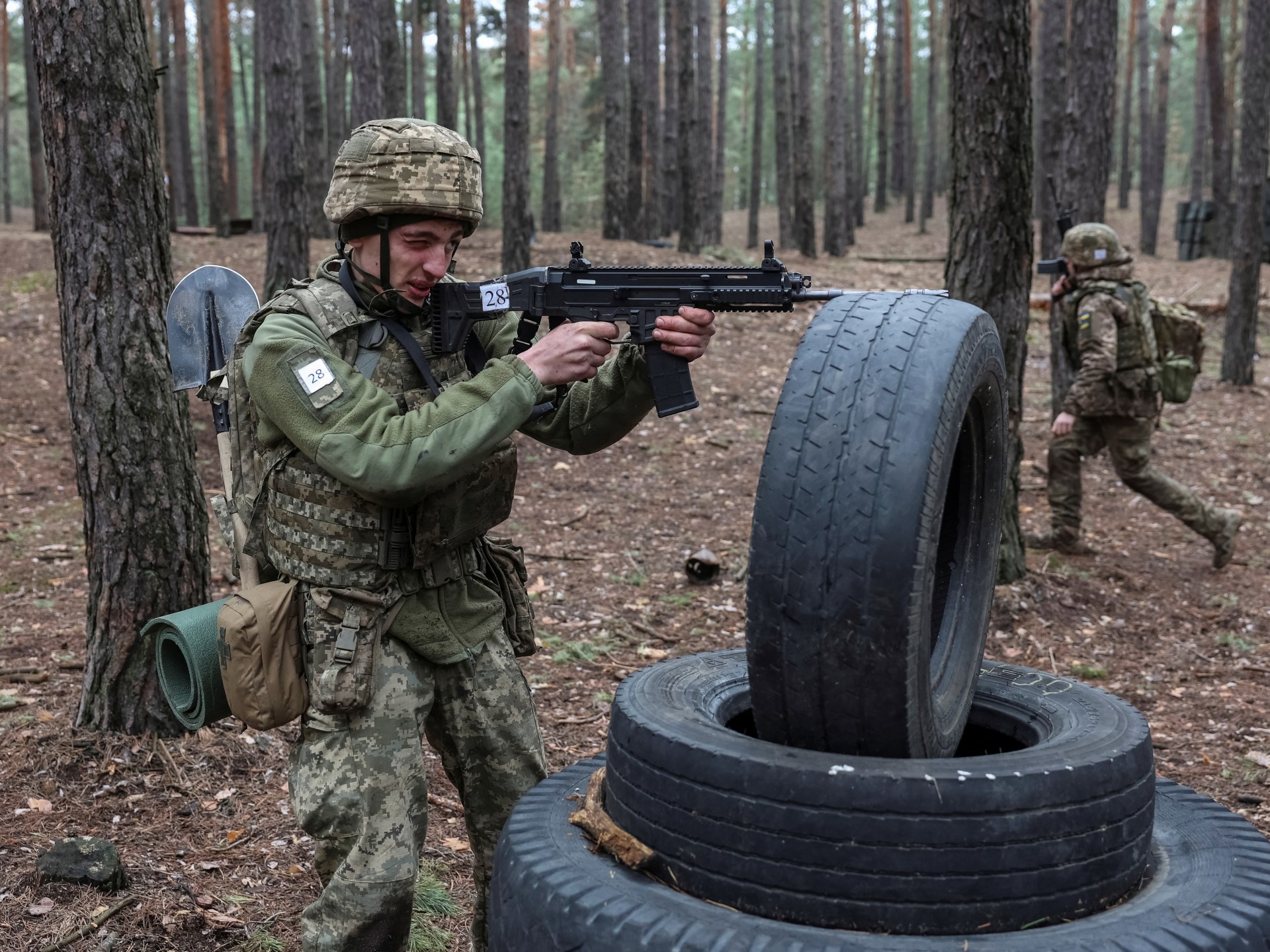
These are the key events on day 1,134 of Russia’s war on Ukraine.
These are the key events from Wednesday, April 2:
Fighting
One person was killed and two others injured in a Russian overnight attack on southeast Ukraine’s Zaporizhia region, Regional Governor Ivan Fedorov said.
A Russian ballistic missile strike on Ukraine’s Kryvyi Rih killed at least four people and injured 14 others, including two children, Ukrainian authorities said.
An infant, a seven-year-old boy and six others were also injured in a drone attack on Ukraine’s Kharkiv region, said Oleh Syniehubov, the region’s governor. Kharkiv’s Mayor Ihor Terekhov said 15 drone strikes were carried out in the region.
At least 60 people were forced to evacuate from their homes in the Russian city of Kursk after falling debris from intercepted Ukrainian drones hit their apartment buildings, acting governor, Alexander Khinshtein, said.
Russia’s state news agencies TASS and RIA Novosti report that Russian forces destroyed 93 Ukrainian drones overnight, most of which were destroyed over the Kursk region.
The Ukrainian air force said it shot down 41 of 74 Russian drones launched towards Ukraine overnight. Another 20 drones failed to reach their targets due to electronic jamming measures, the air force said.
Ukrainian President Volodymyr Zelenskyy said nearly 4,000 people were left without electricity after a Russian drone hit a substation in Ukraine’s northeastern Sumy region, and artillery fire damaged a power line in the central Dnipropetrovsk region.
Moscow’s Ministry of Defence also accused Kyiv of hitting Russian energy facilities twice in the past 24 hours despite a mutual moratorium on energy strikes brokered by the United States.
Germany’s Deutsche Presse-Agentur (DPA) news agency reported that Russia had destroyed one of its own dams in the Belgorod border region using an aerial bomb. The reason for the dam’s destruction was not given.
Oil and Gas
Russia said it ordered the closure of the Black Sea port terminal handling Kazakhstan’s oil exports and US giants Chevron and Exxon Mobil, after two inspections on moorings for vessels at the terminals.
Ceasefire
Russia and Ukraine accused each other of breaching the US-brokered moratorium on energy strikes after both countries reported damage to energy facilities due to alleged violations by both sides.
Politics and Diplomacy
Eleven Ukrainian children were returned to Kyiv from Russia and Russian-occupied Ukraine under the Bring Kids Back UA initiative, President Zelenskyy’s chief of staff, Andriy Yermak, said.
The Kremlin said it is “possible” that Russian envoy Kirill Dmitriev will visit the US and said contact with Washington was ongoing. The Reuters news agency reported that Dmitriev is expected in Washington this week for talks with US President Donald Trump’s administration.
Conflict Zones
‘Live-fire drills’: China conducts second day of war games around Taiwan | Border Disputes News
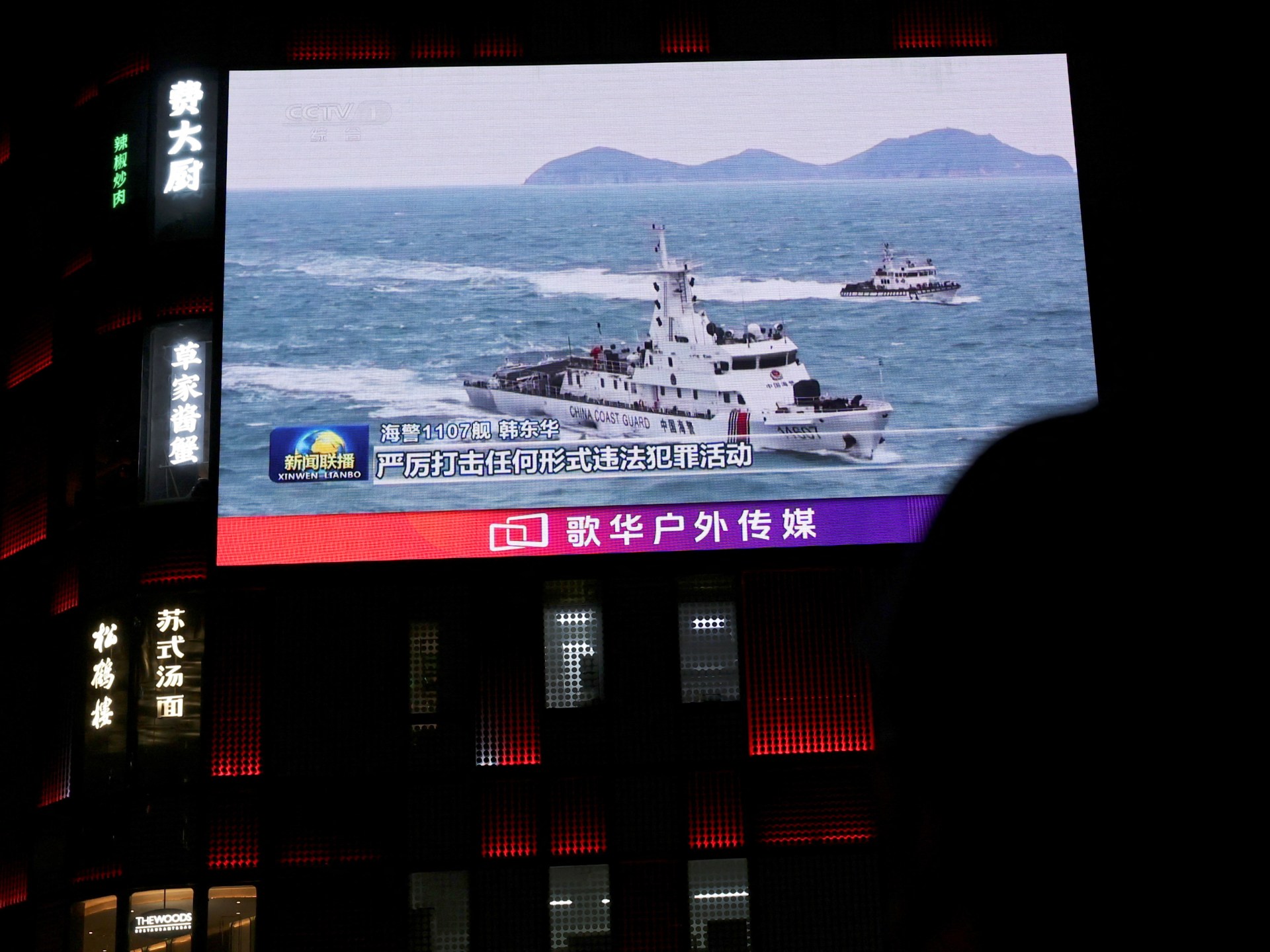
China continues a second day of war games and military drills around Taiwan, including simulated attacks on key targets.
China’s military said it has simulated attacks on high-value targets in Taiwan, including ports and energy facilities, as it carried out “live-fire” military drills around the self-ruled island on the second day of war-game exercises.
The drills on Wednesday, part of an operation titled “Strait Thunder-2025A”, were conducted in the middle and southern parts of the Taiwan Strait as well as the East China Sea, the military said.
“Long-range live-fire drills” were carried out in order to practise hitting “simulated targets of key ports and energy facilities” during the exercises, the military said.
The aim was to “test the troops’ capabilities” in areas such as “blockade and control, and precision strikes on key targets”, said Senior Colonel Shi Yi, spokesman of the Chinese military’s Eastern Theatre Command.
China’s Shandong aircraft carrier was also deployed in the drills, testing the ability to “blockade” Taiwan by integrating naval and air power, the Eastern Theatre Command said.
China’s military published a video of what it said were the live-fire drills that showed rockets, rather than ballistic missiles, being launched and hitting targets on land, and an animation of explosions over Taiwanese cities including Tainan, Hualien and Taichung, all home to military bases and ports.

Taiwan’s President William Lai Ching-te condemned the drills while the island’s defence ministry said China had deployed 21 warships around the island, including the Shandong carrier group, and 71 aircraft and four coastguard vessels on Tuesday.
“China’s blatant military provocations not only threaten peace in the #Taiwan Strait but also undermine security in the entire region, as evidenced by drills near Australia, New Zealand, Japan, Korea, the Philippines & the SCS [South China Sea]. We strongly condemn China’s escalatory behaviour,” Taiwan’s Presidential Office said in a post on X.
On Wednesday, Taiwan said that 76 Chinese military aircraft and 19 naval or government ships had entered waters and airspace near the island over the previous 24 hours, with 37 of the planes crossing the centre line in the 160-kilometre (110-mile) wide Taiwan Strait that forms an unofficial border with mainland China, but which Beijing refuses to acknowledge.
The Shandong aircraft carrier group had also entered Taiwan’s air defence identification zone, a self-defined security area tracked by the Taiwanese military.
Al Jazeera’s Katrina Yu, reporting from Beijing, said the exercises were not the first conducted by China around Taiwan but these latest drills “show how serious Beijing is about honing their capability to blockade the island of Taiwan should they deem necessary”.
“Beijing sees Taiwan, the democratic ruled island, as a breakaway Chinese province, and President Xi Jinping has said time and time again, that whether by peaceful means or by force, it will be unified again with mainland China,” Yu said.
“Taiwanese leader Lai Ching-te has condemned the drills. He says, this is only demonstrating that China is a troublemaker in this region,” Yu added.
The drills are expected to continue until Thursday night and China’s Maritime Safety Administration has announced that an area off the northern part of the eastern province of Zhejiang, more than 500km (310 miles) from Taiwan, will be closed for shipping due to military operations.
Conflict Zones
US approves sale of 20 F-16 fighter jets worth $5.58bn to Philippines | Military News
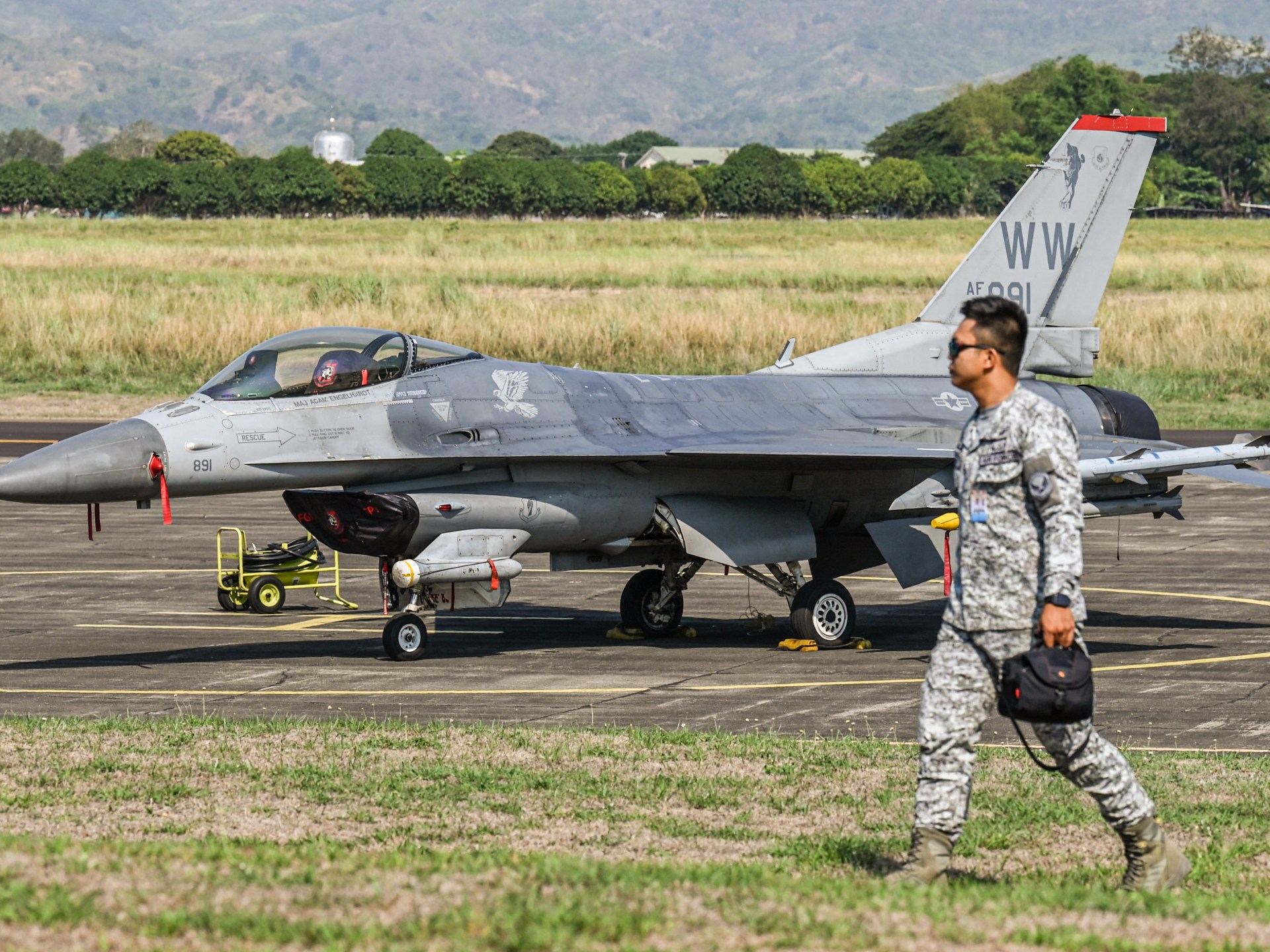
Potential sale of US fighter jets comes as tensions mount between the Philippines and China over maritime disputes in the South China Sea.
The United States has approved the potential sale of $5.58bn in F-16 fighter jets to the Philippines, describing the proposed deal as supporting the security and foreign policy concerns of the US by improving the capability of a “strategic partner”.
Describing the Philippines as “an important force for political stability” in Southeast Asia, the US State Department announced on Tuesday that the sale had been approved and could see 20 F-16 warplanes and related equipment transferred to Manila.
The acquisition of the F-16s would improve “the Philippine Air Force’s ability to conduct maritime domain awareness and close air support missions and enhance its suppression of enemy air defences,” the State Department said.
“The proposed sale of this equipment and support will not alter the basic military balance in the region,” it added.
Manila’s potential purchase of the F-16s comes amid months of mounting tension with Beijing and confrontations between the Philippine Navy and Chinese coastguard forces in the disputed South China Sea, where China has claimed almost complete ownership despite an international legal ruling that such an assertion has no merit.

The Philippines has publicly expressed interest in acquiring F-16s from Washington since at least the administration of former Philippine President Benigno Aquino, which ended in 2016.
Since then, Manila and Washington have significantly deepened their defence cooperation, particularly under the current President Ferdinand Marcos Jnr, who took office in 2022 and began pushing back on Beijing’s sweeping claims to the South China Sea.
US Secretary of Defense Pete Hegseth said during a visit to the Philippines last week that Washington and Manila must stand “shoulder to shoulder” against “threats from the communist Chinese”.
News of the potential sale of advanced fighter aircraft to the Philippines also comes as China on Monday and Tuesday conducted military drills around Taiwan to simulate a blockade of the self-ruled island. Beijing has promised to take the island back under its control either by force or peaceful means.
Philippine military chief General Romeo Brawner said his country would “inevitably” be involved should Taiwan be invaded by China.
“Start planning for actions in case there is an invasion of Taiwan,” General Brawner told troops in northern Luzon island, without naming the potential invader.
“If something happens to Taiwan, inevitably we will be involved,” he said.
Joint US-Philippine military exercises, scheduled for later this month, will be conducted in northern Luzon, the part of the Philippines nearest Taiwan, Brawner said.
“These are the areas where we perceive the possibility of an attack. I do not want to sound alarmist, but we have to prepare,” he said.
In December, the Philippines angered China further when it announced the planned acquisition of the US mid-range Typhoon missile system in a push to secure its maritime interests.
Beijing warned such a purchase could lead to a regional “arms race”.
-

 Lifestyle2 days ago
Lifestyle2 days agoThere’s a new push to put whole milk back in school meals. Here’s what you should know
-

 Lifestyle2 days ago
Lifestyle2 days ago‘The Friend’: When the star of the movie is a very good boy
-

 Education1 day ago
Education1 day agoTrump administration suspends a host of federal grants to Princeton University
-
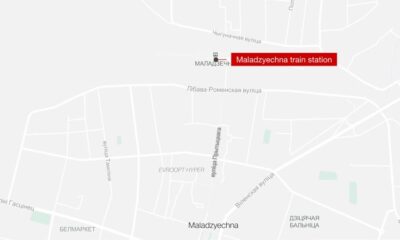
 Europe2 days ago
Europe2 days agoUS citizen detained in Belarus accused of sneaking into country on cargo train
-

 Sports2 days ago
Sports2 days agoDeshaun Watson: Cleveland Browns co-owner Jimmy Haslam calls controversial acquisition of QB a ‘big swing and miss’
-

 Sports2 days ago
Sports2 days agoNFL announces changes to kickoffs, overtime, how the ball is spotted and instant replay but owners table ‘tush push’ ban
-

 Lifestyle2 days ago
Lifestyle2 days agoEscaped otter is home safe but zoo says her pal is still on the loose
-

 Middle East2 days ago
Middle East2 days agoLibya: A Voice for Reconciliation | Documentary




